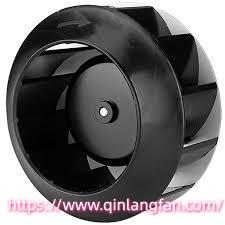How Can Qinlang Shape Forward Curved Centrifugal Fan Flow To Support Calm Environments?

A Forward Curved Centrifugal Fan produced by Qinlang introduces a sense of steady motion for ventilation projects that value balanced air movement and nuanced airflow organization, and this opening sense of controlled energy creates a foundation that guides the entire discussion of how airflow equipment shapes comfort across environments. The design philosophy surrounding this type of fan highlights a flowing approach that aligns with diverse architectural spaces where air circulation demands a delicate touch. The structure emphasizes curvature that promotes smooth transitions of air without abrupt turbulence, and this characteristic has allowed such equipment to be used in quiet interior settings where atmospheric control depends on balanced distribution rather than intense directional force. The relationship between form and function becomes increasingly meaningful when observing the way this fan structure supports broader environmental goals since the movement it provides integrates naturally into corridors, work areas, community facilities, and enclosed public zones where comfort depends on harmony rather than pressure. Qinlang brings this concept into practical application by shaping each detail with attention to material uniformity, wheel balance, and stable airflow paths, ensuring that the equipment presents a continuous flow that avoids disruptive motion even when dealing with long ventilation routes.
The structure behind this fan style encourages airflow that spreads with gentle outward momentum, creating an environment that supports extended ventilation runs without generating aggressive dynamics that may cause discomfort for occupants. This approach to airflow management aligns with design strategies that value subtle transitions and soft spatial conditioning where air temperature, circulation consistency, and directional stability interact in a way that preserves a calm environment. Engineers who evaluate airflow systems for public sites often value equipment that does not impose sudden shifts across zones and instead preserves a sense of equilibrium that maintains interior comfort for long durations. The adaptable nature of this fan type fits easily within duct frameworks that twist or shift across levels, supporting architectural flexibility without sacrificing quality of movement. Since many indoor spaces evolve over time due to renovations, occupancy changes, and usage demands, ventilation components must accommodate shifting conditions, and this fan structure provides that adaptability through gentle behavior under varying system resistance. In commercial settings that operate continuously, airflow movement must remain steady to ensure that occupants experience reliable comfort, and this design aligns with such expectations without creating unnecessary complexity for system operators.
A quiet and stable airflow path is often essential for environments such as educational zones, administrative buildings, shared workrooms, and facilities focused on concentration where continuous background motion must remain nonintrusive. The structure of this airflow equipment supports this requirement through its curved profile, which encourages a natural glide that reduces sharp acoustic signatures that can disturb focused activity. Air pressure distribution remains consistent across the span of the wheel, which contributes to an ambiance where airflow can be felt but not aggressively heard, supporting a sense of comfort that becomes part of the background rather than a dominant presence within a room. This style of motion also supports filtration systems because it enhances compatibility with resistance changes that occur as filters collect particulate matter, creating a dependable airflow environment that does not immediately fluctuate when conditions shift. Maintenance teams appreciate equipment that continues functioning smoothly as internal components evolve over time, allowing scheduled upkeep rather than urgent adjustments. This quality supports long term planning, which is important for organizations that rely on predictable operational cycles and structured facility routines.
When airflow systems stretch across interior and semi enclosed exterior areas, flexibility becomes essential, and this airflow equipment provides such adaptability by maintaining calm movement through varied duct paths. As structures expand or interior layouts shift, many ventilation frameworks must accommodate new patterns without requiring full reconstruction, and this type of airflow wheel supports such transitions naturally. The balanced motion supports spaces where people gather, move, rest, collaborate, and interact, reinforcing an environment shaped around continuity rather than disruption. This harmony plays a major role in large venues where airflow must contribute to an impression of openness without creating noticeable high pressure zones that could cause discomfort. The structure fits reliably into projects where engineers seek airflow that participates in the overall environment rather than dominating it.
The Forward Curved Centrifugal Fan reflects the harmony Qinlang applies to ventilation solutions, shaping airflow that supports comfort through fluid movement and steady distribution, and the final value emerges when these qualities integrate seamlessly into buildings that depend on lasting interior equilibrium. This equipment forms part of a broader approach to shaping indoor comfort with graceful and sustained airflow paths that maintain stable interior experiences across varied architectural needs, and its presence enhances comfort where people gather, collaborate, and rest. For additional information and detailed product insights, please visit https://www.qinlangfan.com/product/centrifugal-fan/forward-tilt-centrifugal-fan/
- Art
- Causes
- Crafts
- Dance
- Drinks
- Film
- Fitness
- Food
- Juegos
- Gardening
- Health
- Home
- Literature
- Music
- Networking
- Other
- Party
- Religion
- Shopping
- Sports
- Theater
- Wellness
